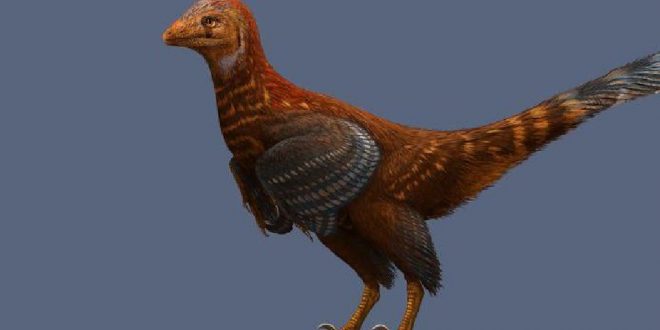Scientists have discovered the fossil of a new bird-like dinosaur species that roamed the earth around 125 million years ago.
The dinosaur, which the team have named the ‘Jianianhualong tengi’, is a troodontid dinosaur.
The description of Jianianhualong is published in the journal Nature Communications, co-lead by an international team of paleontologists, Xing Xu, Phil Currie, and Michael Pittman, all dinosaur experts who have long been examining the spectacular fossils that emerge from some of the most famous localities in China. This fossil was discovered in the Jehol Group from the Lower Cretaceous, a collection of fossil sites known for being lousy with dinosaurs. Talking just about the group this theropod dinosaur is a member of, the troodontids, it joins four other remarkably complete specimens that have been discovered and described. What makes this 125 million-year-old troodontid unique is not just that it has feathers, but what kind of feathers they are.
The 3-foot-long, 5.5-pound dinosaur was covered in large feathers from its arms down to its tail. In life, the feathered tail would have been “frond-like”, but unlike any other troodontid discovered, the tail was made up of asymmetrical feathers that are wider on one side of the vane than the other. This type of feather is so closely tied with flight in modern birds that they are often called “flight feathers.” Discoveries like that of Jianianhualong, a non-avian dinosaur that likely would not be capable of powered flight, shows their origin came earlier in the dinosaurian family tree than previously thought.
Study leader Michael Pittman from the University of Hong Kong was excited about this find although he knew he might happen: “We expected that somebody might find asymmetrical feathers in a troodontid someday because they have such similar skeletons to birds, but for it to be us was really wonderful.”
What good are flight feathers on a dinosaur that could not fly? Paleontologists hypothesize these asymmetrical feathers provided some locomotor benefits to dinosaurs like Jianianhualong, making them more aerodynamic when running up hills or hopping off branches. If they provided some fitness benefit, they could have helped these earthbound dinosaurs survive. In general, feathers may have sprung up for an entirely different reason not related to movement. “They may even have have been first associated with other non-aerodynamic functions, perhaps even display,” he says. When asked what came first, the flight or the feather, what is Pittman’s answer? “Flight probably came after asymmetrical feathers, but we need more data to test this hypothesis.”
Agencies/Canadajournal
 Canada Journal – News of the World Articles and videos to bring you the biggest Canadian news stories from across the country every day
Canada Journal – News of the World Articles and videos to bring you the biggest Canadian news stories from across the country every day



